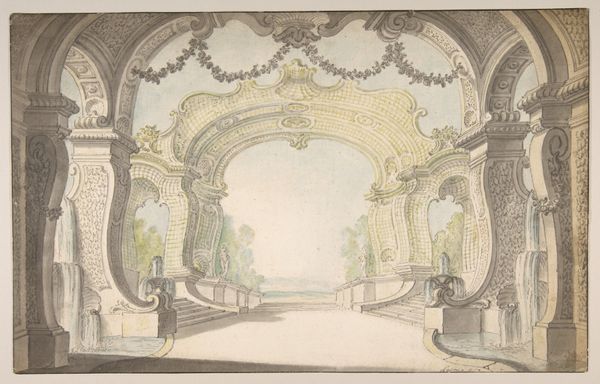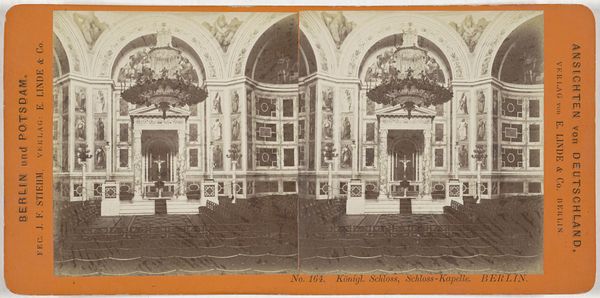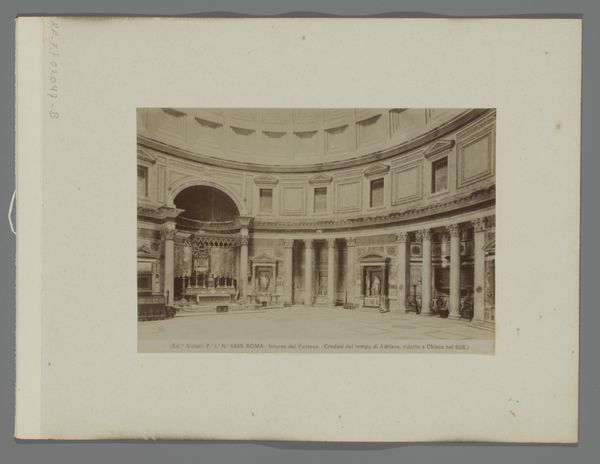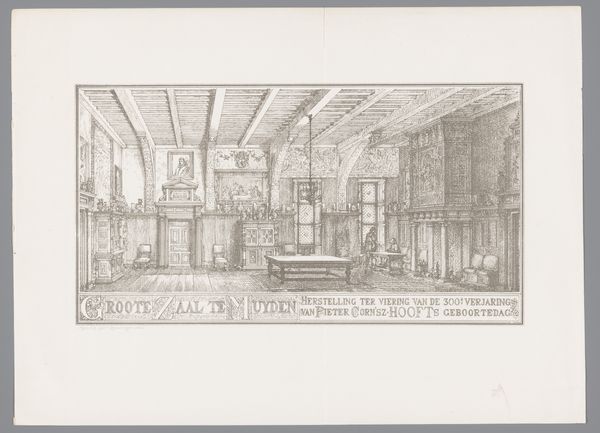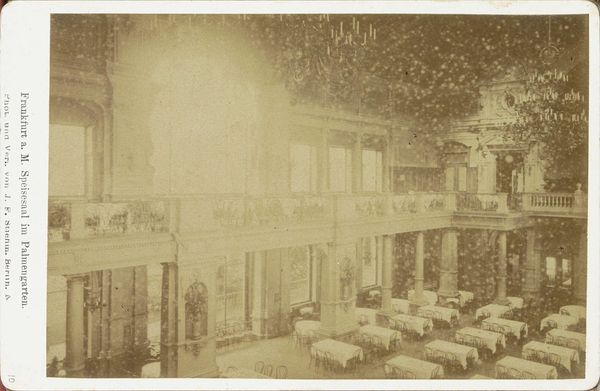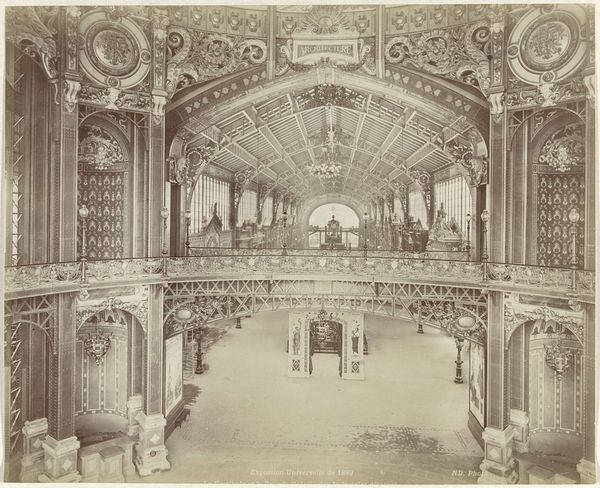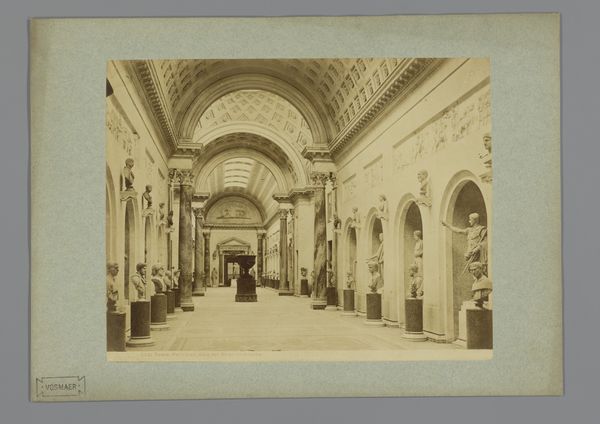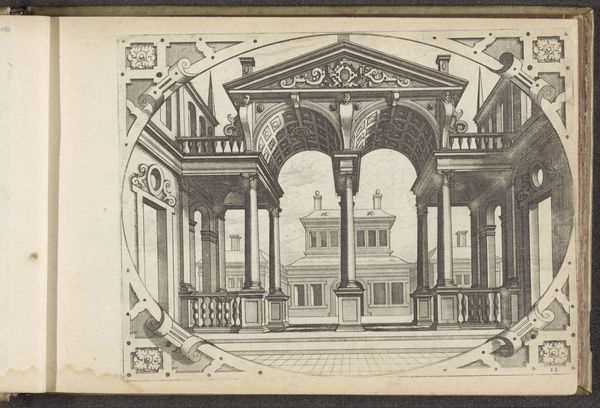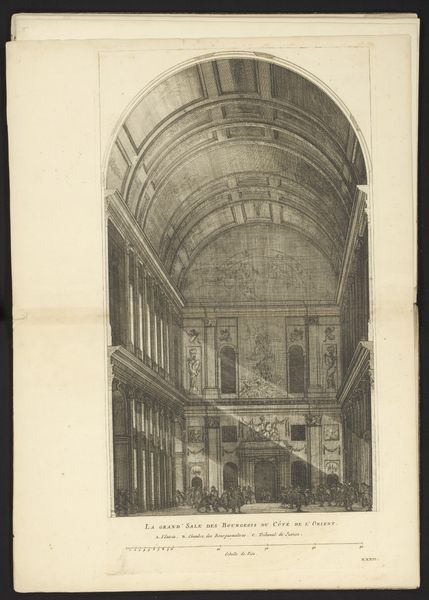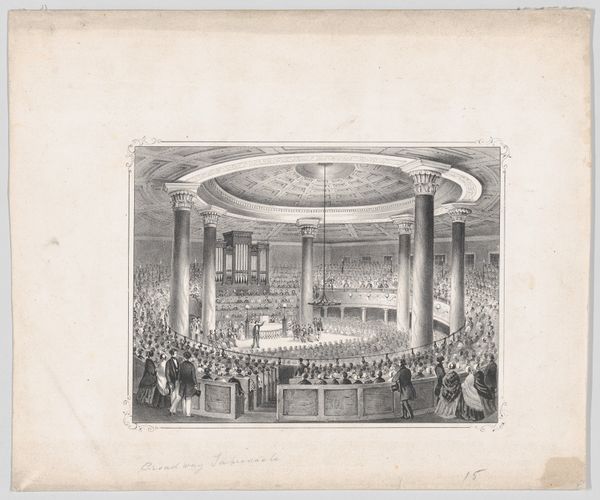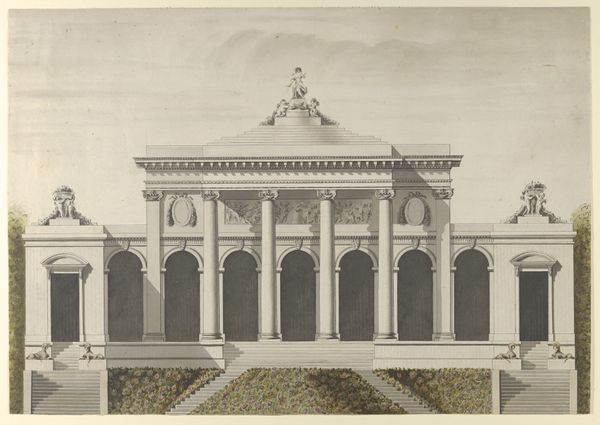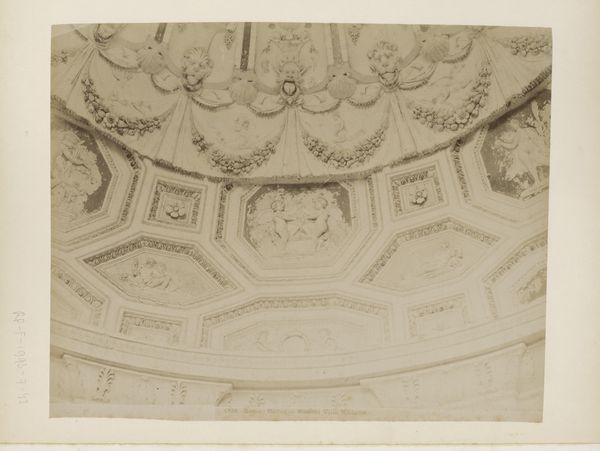
print, photography
# print
#
photography
#
coloured pencil
#
genre-painting
#
realism
Dimensions: height 109 mm, width 168 mm
Copyright: Rijks Museum: Open Domain
Curator: This photograph, taken around 1880 by Johann Friedrich Stiehm, depicts the "Interieur van de Muschelsaal in het Neues Palais te Potsdam." It captures an interior space, opulent even in monochrome. Editor: My initial thought is "restrained extravagance". The patterns are rich but repetitive; the space feels empty despite the ornamentation. There's a peculiar stillness to it. Curator: Yes, stillness pervades, which contrasts to the materials. Consider the intensive labor required to realize this "Muschelsaal," the shell hall. Envision the hands carefully placing each shell, a testament to meticulous craft and a visible symbol of power dynamics. The image doesn’t necessarily reflect or acknowledge that exploitation, right? Editor: Absolutely, the materiality speaks volumes. We see crystal chandeliers – glass, mined, produced, transported. Look at the ceiling fresco, seemingly a quick wash, set within repetitive geometric tiles – then the shell encrusted walls and vertical lines. All were commodities and signs of production. What meaning do you draw from this layering? Curator: It certainly offers a lens through which we can scrutinize consumption. In my opinion, such decoration, built in times of upheaval and rapid socio-economic shifts, projects imperial power as the material is translated and re-contextualized for social change, such as to solidify imperial national identity through architecture and images such as this one. Editor: Right, images are always commodities themselves, intended to solidify some view of reality. The stark light and empty space gives me a feeling the image and perhaps the room is staged, the stillness almost uncanny, as though designed to exclude those hands of production you speak of. I guess the question I have left is, where did those labor practices come from? Curator: Absolutely crucial to address; to whom and where should justice be allocated. I think, through images such as these, we start that process of addressing such inequities. Editor: So much conveyed, both intentionally and unintentionally, in a single photographic print. Food for thought!
Comments
No comments
Be the first to comment and join the conversation on the ultimate creative platform.
